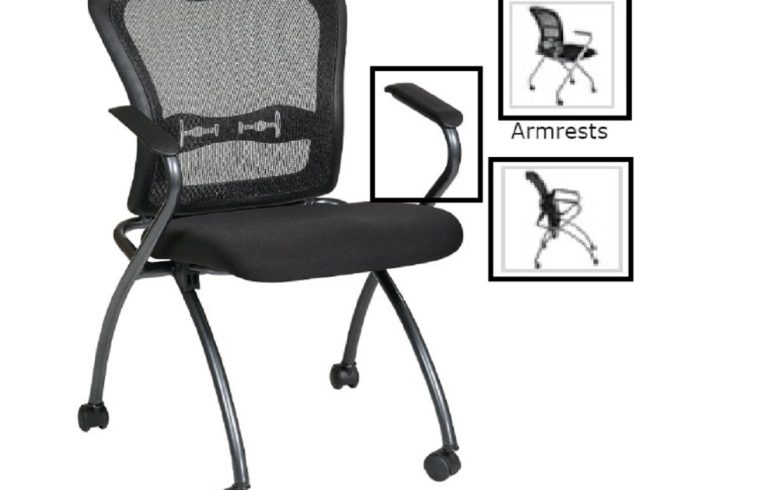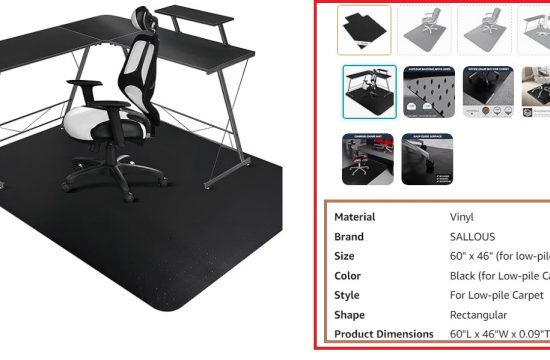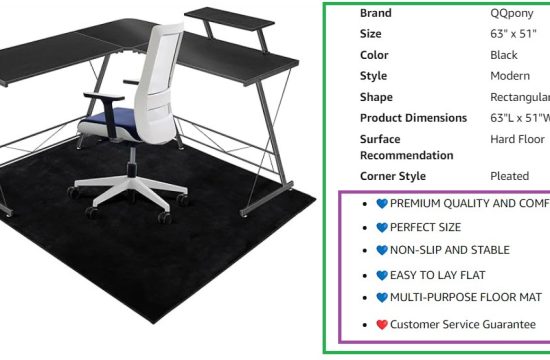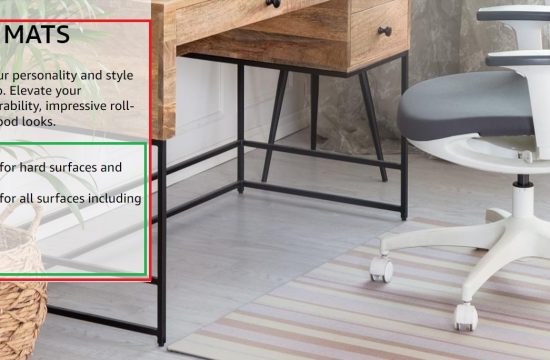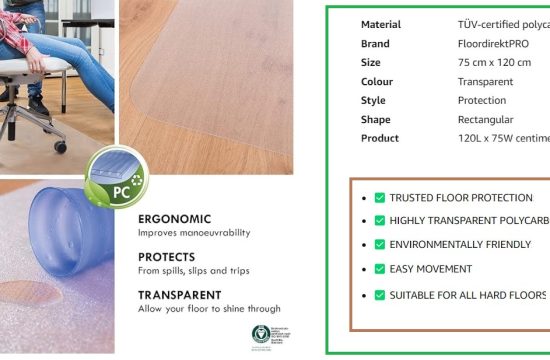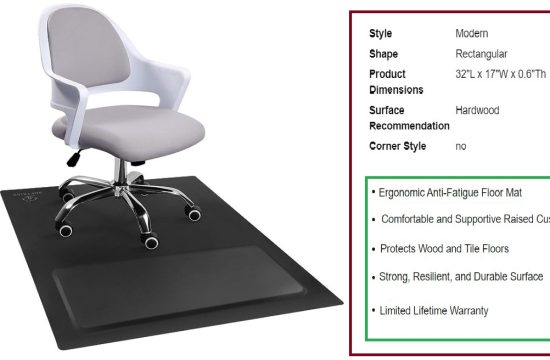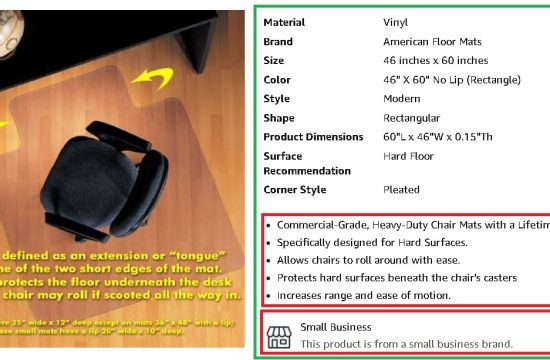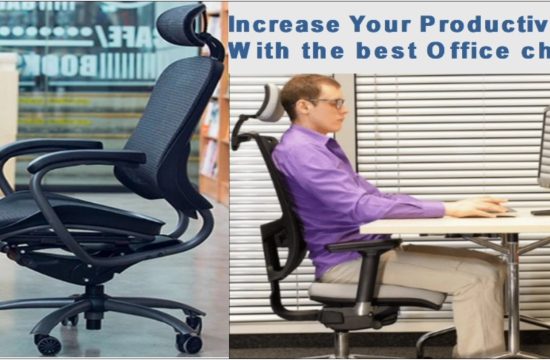Welcome
The thought alway crosses my mind “ Do I need arms on my office chair?” What are the pros and cons of having arms on any office chairs?
Are they simply a decorative addition, or do they serve a more significant purpose?
In this post, we will delve into the world of armrests and explore their significance in promoting ergonomic comfort in the workplace.
So, keep up with us as we unravel the pros and cons of office chair arms and discover whether they are a must-have feature for your workspace.
While researching, I found several pros and cons of having arms on any office chair.
Let’s discuss these:
The ergonomic advantage:
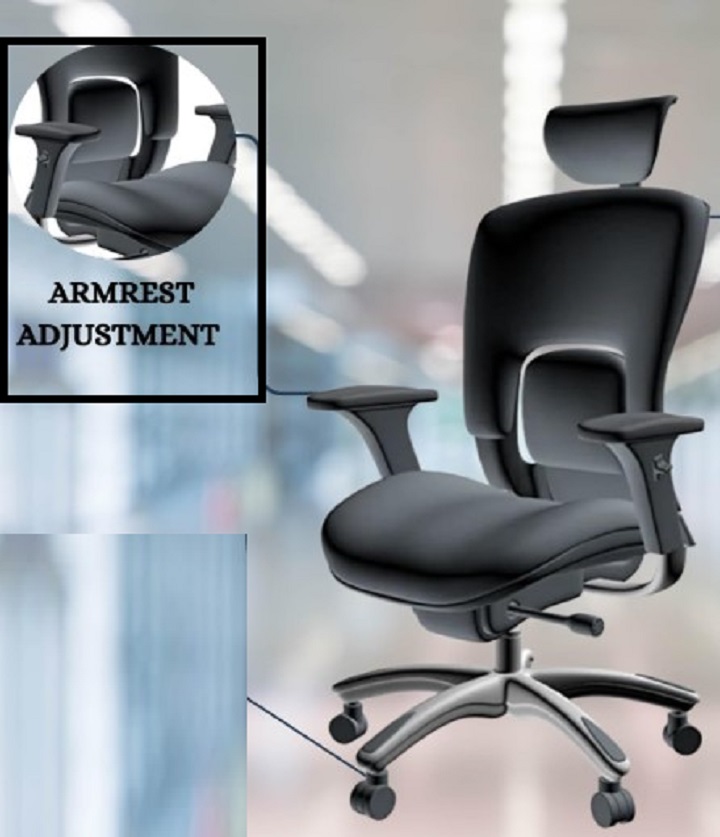
Discussing how armrests on office chairs provide support and help reduce strain on the shoulders and the upper body.
When it comes to choosing an office chair, many people wonder whether they really need arms on their chair.
While it may seem like a minor detail, the presence or absence of armrests can greatly impact your comfort and productivity throughout the day.
Let’s explore the pros and cons of office chair arms from an ergonomic perspective.
Having armrests on your office chair can provide vital support for your upper body.
Especially if you spend long hours sitting at a desk, your shoulders and neck are prone to strain and discomfort.
The armrests help to alleviate this strain by providing a resting place for your arms, thereby reducing the weight and pressure on your upper body.
This ergonomic advantage can lead to improved posture and decreased muscle tension, resulting in a more comfortable and productive work environment.
Armrests on your office chair can also enhance your overall work efficiency.
By offering a place to rest your arms, you can avoid the temptation of hunching forward or slouching, which can lead to poor posture and eventually back pain.
With armrests, you are encouraged to maintain a more upright position, promoting better spinal alignment.
This not only reduces the risk of developing musculoskeletal issues, but it also contributes to increased focus and concentration, enabling you to accomplish tasks more effectively.
While armrests undoubtedly offer several ergonomic benefits, they may not be suitable for everyone or every task.
For instance, individuals who frequently engage in activities that require wide lateral movements, such as playing a musical instrument, might find armrests restrictive.
The quality and adjustability of the armrests also play a significant role in determining their usefulness.
Look for chairs with adjustable armrests that can be customized to your preferred height and width.
This adaptability allows you to find the optimal position that suits your body and enhances your comfort.
Additionally, padded armrests can provide extra cushioning, reducing pressure points, and further enhancing the ergonomic advantages of having arms on your office chair.
Improve Posture:

Having arms on your office chair can greatly improve your posture while working.
The armrests provide a resting place for your arms, which helps to alleviate strain on your upper body.
By keeping your arms supported, you are able to maintain a more relaxed position, which ultimately leads to better spine alignment.
Proper posture is crucial for long hours of sitting, as it helps prevent fatigue or discomfort in your neck, shoulders, and back.
Increase Comfort:
One of the significant advantages of having arms on your office chair is the enhanced comfort they provide.
Resting your arms on the armrests allows you to take frequent breaks from typing or writing, thereby reducing the strain on your wrists and forearms.
This added comfort leads to less tension in your muscles and promotes a more relaxed working environment.
Having a comfortable chair can also aid in preventing conditions such as carpal tunnel syndrome or repetitive strain injury.
Support for Arms and Shoulders:
Office chair arms offer essential support for your arms and shoulders, especially during repetitive tasks or when using a computer mouse.
Placing your arms on the armrests reduces the load on your shoulder muscles, preventing fatigue and potential strain.
This support is particularly crucial for individuals with preexisting shoulder or arm injuries, as it allows for proper recovery and reduces the risk of aggravating the condition.
Therefore, having arms on your office chair can provide much-needed support for your upper body, allowing you to work more comfortably and efficiently.
Do I need arms on my office chair? Pros and Cons of Office Chair Arms
Increase productivity:
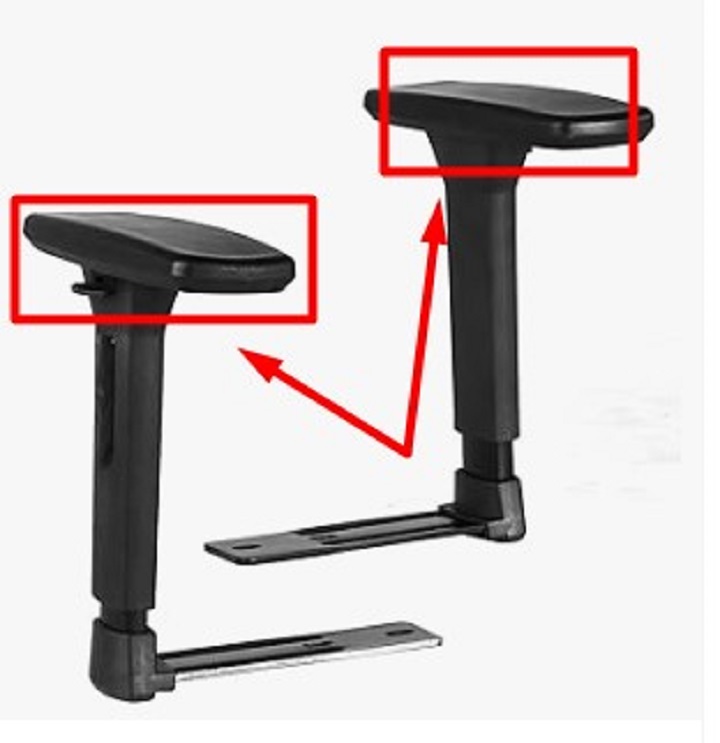
Having armrests on your office chair can significantly enhance your productivity levels during long hours of work.
The presence of armrests allows for better weight distribution throughout the upper body, reducing muscle fatigue and preventing unnecessary strain.
This, in turn, enables you to maintain a better posture, leading to improved concentration and focus on the tasks at hand.
Comfort and support:
One of the major advantages of having arms on your office chair is the added comfort and support they provide.
Armrests offer a convenient place to rest and position your arms while typing or using a mouse.
By allowing your arms to relax on the armrests, you can alleviate tension in your shoulders, neck, and upper back.
This can lead to reduced discomfort and decrease the likelihood of developing musculoskeletal disorders.
Versatility in positioning:
With arms on your office chair, you gain the flexibility to adjust your body position based on your specific needs.
The armrests can offer support while you lean back, providing a comfortable place to rest your arms as you take a short break.
When you are engaged in intense work or tasks that require precision, you can rely on the armrests to maintain stability and control over your movements, thus boosting your overall performance.
Aesthetics and professionalism:
Office chair arms not only provide functional benefits but also contribute to the overall aesthetics and professionalism of your workspace.
They add a touch of elegance and sophistication to your office decor, elevating the overall look of your work environment.
Clients and visitors who enter your office will perceive the presence of armrests as an indicator of attention to detail and care for employee well-being, enhancing your professional image.
However there are some cons there:-
Potential drawbacks:
While office chair arms may have their benefits, it is important to consider the potential drawbacks they can impose on the user.
Limiting Mobility:
While office chair arms can offer numerous benefits, they may also limit your mobility to some extent.
People with smaller workspaces might prefer chairs without arms to maximize space and freedom of movement.
Therefore, it is essential to consider your specific needs and work requirements when deciding whether or not to opt for an office chair with arms.
Having arms attached to your chair can restrict your movements, making it slightly more challenging to reach objects or navigate around your workspace.
If you require frequent access to items on your desk or tend to move around a lot during your workday, you may find that office chair arms hinder your flexibility.
It is essential to consider your specific work requirements and preferences before opting for an office chair with arms.
Restrict movement.
For tasks that require you to twist, turn, or lean, having armrests can hinder your ability to perform these movements freely.
This can become frustrating and impede your productivity, particularly if your work involves intricate movements or frequently shifting positions.
It is important to consider whether the added support provided by armrests outweighs the potential limitations they may impose on your movement and efficiency.
lead to a poor sitting posture sometimes.

While they may provide a sense of comfort and relaxation, excessive reliance on armrests can promote slouching or leaning to one side.
This can contribute to back and neck pain, as well as poor spinal alignment.
It is crucial to maintain proper posture throughout the day, and armrests may not always facilitate this requirement.
Not suitable for everyone.
Office chair arms may not be suitable for everyone, especially individuals with larger body frames.
Armrests that are too narrow or not adjustable may not provide adequate support, leading to discomfort or strain on the user’s shoulders and arms.
It is essential to consider the dimensions and adjustability options of the armrests to ensure they are suitable for your body type and ergonomic needs.
Space Constraints:
It is worth considering the space constraints in your office or workstation before deciding on an office chair with arms.
A chair with wide armrests may take up more space and might not be suitable for smaller or more compact work areas.
Measure the available space beforehand to ensure that the addition of arms on your office chair does not overcrowd your workspace.
Consider the layout and arrangement of your desk, as well as any other equipment or furniture in the vicinity, before making a decision on whether or not to have arms on your office chair.
Potential limitations:
While the presence of armrests on office chairs offers numerous advantages, it is important to consider potential limitations as well.
One common drawback is the restriction of movement that may occur due to the fixed nature of armrests.
This can limit your ability to move freely or adopt different seating positions, which may be necessary for certain tasks or personal preferences.
Some individuals may find that the arms on their office chair are too high, too low, or uncomfortable, leading to a suboptimal sitting experience.
After all, we have to decide whether to have or not to have arms on a chair.
Personal preference:
When it comes to office chairs, one size doesn’t fit all.
The need for armrests can vary greatly among individuals, as personal comfort and ergonomic requirements differ from one person to another.
Some individuals find armrests to be essential for support and stability, while others prefer a more open and airy feel.
Ultimately, the decision regarding the necessity of arms on an office chair largely depends on personal preference.
Pros of Office Chair Arms:
For those who find armrests to be crucial, there are several benefits to having them on an office chair.
Firstly, armrests provide much-needed support for the arms and shoulders, reducing strain and fatigue that can occur from prolonged periods of sitting.
The availability of armrests also helps individuals maintain proper posture, as they provide a convenient place to rest the arms while keeping the upper body aligned.
This can be particularly important for individuals who spend long hours working at a desk.
Cons of Office Chair Arms:
While there are numerous advantages to having arms on an office chair, there are also some downsides to consider.
One of the main disadvantages is that armrests can restrict movement and flexibility.
This can be problematic for individuals who prefer to sit cross-legged or switch positions frequently throughout the day.
Armrests may prevent them from adopting the positions they find most comfortable, resulting in discomfort or reduced productivity.
Conclusion and Recommendation
Whether or not you need arms on your office chair depends on individual preferences, work requirements, and ergonomic needs.
The presence of armrests can offer significant advantages, such as improved support, relaxation, and productivity.
However, they may also impede mobility and prove problematic in certain work environments.
Therefore, it is recommended that you carefully assess your specific needs, experiment with different chair types, and invest in an office chair that provides adjustable and well-designed armrests.
By doing so, you can find a balance that maximizes comfort, promotes healthy posture, and enhances your overall well-being in the office.
